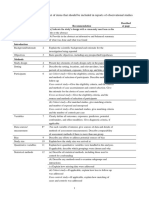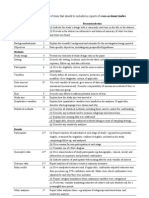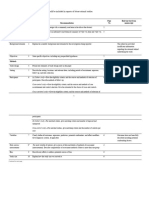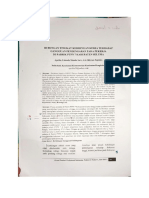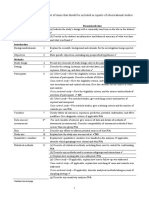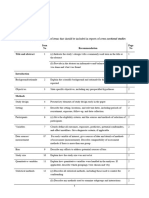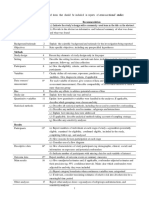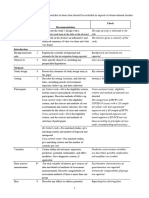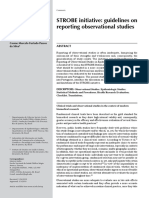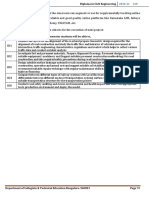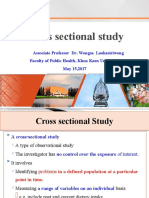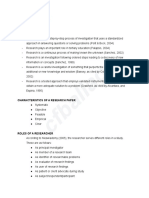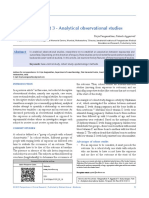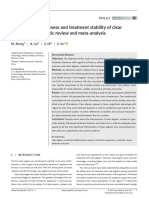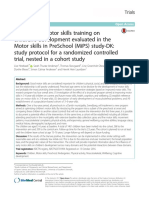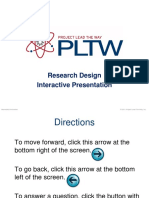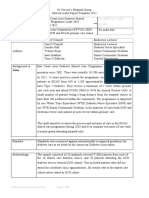0% found this document useful (0 votes)
582 views5 pagesFlow Chat Strobe
The document describes a study flowchart and checklist for reporting observational studies. It includes a table outlining the STROBE statement checklist items including title, abstract, introduction, methods, results, and discussion. The methods section describes the study design, setting, participants, variables, data sources, bias, study size, quantitative variables, and statistical methods. The results section reports participant numbers and characteristics, outcome data, and main results. The discussion summarizes key results and limitations and interprets the results.
Uploaded by
Nida ul AzkiyaCopyright
© © All Rights Reserved
We take content rights seriously. If you suspect this is your content, claim it here.
Available Formats
Download as DOCX, PDF, TXT or read online on Scribd
0% found this document useful (0 votes)
582 views5 pagesFlow Chat Strobe
The document describes a study flowchart and checklist for reporting observational studies. It includes a table outlining the STROBE statement checklist items including title, abstract, introduction, methods, results, and discussion. The methods section describes the study design, setting, participants, variables, data sources, bias, study size, quantitative variables, and statistical methods. The results section reports participant numbers and characteristics, outcome data, and main results. The discussion summarizes key results and limitations and interprets the results.
Uploaded by
Nida ul AzkiyaCopyright
© © All Rights Reserved
We take content rights seriously. If you suspect this is your content, claim it here.
Available Formats
Download as DOCX, PDF, TXT or read online on Scribd
/ 5








